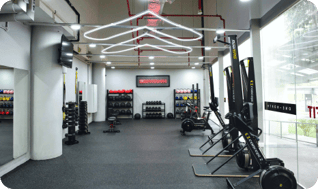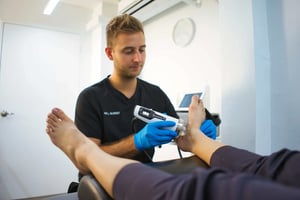
Extracorporeal Shockwave Therapy

What is Shockwave Therapy?
Shockwave therapy, also known as Extracorporeal Shockwave Therapy (ESWT), is a cutting-edge, non-invasive treatment that promotes healing in damaged tissues. By delivering acoustic pressure waves to targeted areas, this therapy enhances blood flow, stimulates cellular repair, and accelerates the body’s natural healing process.
Originally developed for breaking up kidney stones, shockwave technology was first introduced in medical settings as Extracorporeal Shockwave Lithotripsy (ESWL), a high-energy procedure performed in operating theatres. Over time, its therapeutic benefits extended to musculoskeletal care, and it is now widely used in podiatry to treat chronic pain and injuries in the feet and lower limbs.
This clinically proven treatment has gained global recognition, including in Singapore, where it is widely adopted for conditions such as plantar fasciitis, Achilles tendinopathy, and other soft tissue injuries. The shockwaves used in ESWT are safe, extensively studied, and recognised as an effective treatment modality in orthopaedic, podiatric, and hospital settings worldwide.
Radial Shockwave Therapy (RSWT) is a widely used form of shockwave therapy, valued for its portability, cost-effectiveness, and proven success in treating musculoskeletal conditions.
This therapy generates radial pressure waves through a mechanical process in which a projectile strikes a transmitter, creating pressure waves that spread outward as they penetrate the skin and target underlying tissues. The choice of transmitter is crucial in determining the depth and dispersion of these waves, ensuring optimal treatment effectiveness.
Specialized transmitters, such as fascial transmitters, are designed to address imbalances in connective tissues caused by injuries or poor biomechanics. By correcting these dysfunctions, RSWT helps restore movement, alleviate muscle pain, and accelerate recovery.
Focused Shockwave Therapy (FSWT) employs a concentrated energy beam to deliver targeted treatment to deep tissues, offering greater precision compared to traditional methods. This technology generates shockwaves through an electromagnetic coil, producing a high-intensity beam that penetrates deeply while covering a small surface area. This allows for consistent, high-powered energy delivery to the affected area, enhancing treatment effectiveness.
Although FSWT typically involves a higher cost than Radial Shockwave Therapy (RSWT) due to its specialized technology, it offers enhanced efficiency and effectiveness for certain conditions. For instance, studies have shown that patients with heel pain required fewer sessions with FSWT compared to RSWT.
Combining both radial and focused shockwave therapies has also been highly effective for conditions that require relief for tendinopathies and muscular dysfunction.
Types of Shockwave Therapy
Radial Shockwave Therapy (RSWT)
Radial Shockwave Therapy (RSWT) is a widely used form of shockwave therapy, often selected for its application in treating musculoskeletal conditions, particularly those closer to the surface.
This therapy generates radial pressure waves through a mechanical process in which a projectile strikes a transmitter, creating pressure waves that spread outward as they penetrate the skin and target underlying tissues. The mechanical stress created by these waves aims to trigger reactions in the tissue, supporting the body's natural processes. The choice of transmitter influences the depth and dispersion of these waves, guiding effective procedure.
Specialised transmitters, such as fascial transmitters, are designed to address imbalances in connective tissues that may arise from injuries or poor biomechanics. By addressing these areas, RSWT aims to support movement, help alleviate muscle pain, and assist recovery.
Focused Shockwave Therapy (FSWT)
Focused Shockwave Therapy (FSWT) employs a concentrated energy beam to deliver targeted treatment to deep tissues, allowing for greater precision. This technology generates shockwaves through an electromagnetic coil, producing a focused, high-intensity beam that penetrates deeply while covering a small surface area. This allows for consistent, targeted energy delivery to the affected area.
While the specialised technology for FSWT may influence cost, it is often considered for certain conditions due to its ability to target deeper structures. For instance, studies have shown that patients with heel pain required fewer sessions with FSWT compared to RSWT, which our podiatrists can discuss with you.
Combining both radial and focused shockwave therapies has also been highly effective for conditions that require relief for tendinopathies and muscular dysfunction.
Conditions Suitable for Shockwave Therapy
Foot & Lower Limb Pain
- Plantar Fasciitis & Heel Spurs: Common causes of heel pain that benefit from targeted shockwave therapy.
- Metatarsalgia: Pain and inflammation in the ball of the foot.
- Achilles Tendonitis & Tibialis Posterior Tendonitis: Chronic tendon injuries requiring deep tissue healing.
- Morton’s Neuroma: Nerve-related foot pain often exacerbated by tight footwear.
Sports-Related Injuries
- Shin Splints: Pain along the shin bone caused by overuse.
- Runner’s Knee (Patellofemoral Pain Syndrome): Knee pain linked to repetitive stress.
- Tight Calves & Muscle Imbalances: Addressing restricted movement and enhancing recovery.
- Stress Fractures (Early-Stage): Promoting bone healing through enhanced circulation.
Joint & Muscle Pain
- Bunions & Sesamoiditis: Painful conditions affecting the forefoot and big toe joint.
- PTTD (Posterior Tibial Tendon Dysfunction): A progressive tendon disorder impacting foot alignment.
Many of these conditions can be challenging to treat with traditional methods. Shockwave therapy offers a safe and highly effective alternative, promoting long-term pain relief, faster recovery, and improved mobility.
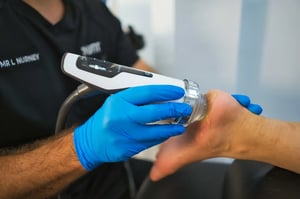
Why choose UFIT for Shockwave Therapy?
Expert-Led Treatment
Our certified practitioners are registered with the International Society for Medical Shockwave Treatment (ISMST), ensuring the highest standard of care and expertise in shockwave therapy.
Non-Invasive & Drug-Free
No medication, no injections, and no surgery—just a natural approach that works with your body’s healing processes.
Fast & Effective Relief
Many patients experience noticeable pain reduction within just a few sessions.
Clinically Proven & Trusted Worldwide
Backed by scientific research and widely used in leading medical and sports rehabilitation centers.
Cutting-Edge Technology for Superior Results
Our advanced shockwave therapy devices ensure deep tissue penetration and precise targeting for maximum treatment effectiveness.
Safe, Quick & Convenient
Each session takes approximately 10 minutes, requires no downtime, and allows you to resume daily activities immediately.
Comprehensive Healing & Recovery
Stimulates tissue repair, reduces inflammation, and enhances circulation to support long-term recovery and pain relief.
Our Approach to Shockwave Therapy
Each shockwave therapy session is quick, effective, and minimally disruptive to your daily routine. Here’s what to expect:
During your first consultation, we’ll take the time to understand your individual needs. This includes reviewing your medical history, assessing key health indicators, and discussing any concerns or issues you may have related to your lower limbs. We will also assess the suitability of shockwave therapy based on your specific condition and medical history.
If shockwave therapy is appropriate for you, we will discuss the treatment plan, including the number of sessions required, potential outcomes, and any precautions or considerations. Our goal is to ensure that we develop a tailored treatment plan that addresses your unique needs and provides the best possible outcome.

Once we’ve confirmed that shockwave therapy is suitable for you, we will begin the treatment. During the session, a special device will be used to deliver targeted shockwaves to the affected area. You may feel a mild to moderate sensation as the shockwaves are applied, but the treatment is generally well tolerated. Each session typically lasts around 15-25 minutes, depending on the size and location of the treatment area. There is no downtime required, so you can resume your daily activities immediately after the session.
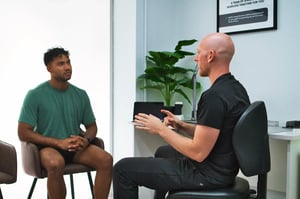
After your treatment, we will schedule follow-up appointments to monitor your progress and assess the effectiveness of the therapy. During these sessions, we may perform outcome measures testing to evaluate improvements in pain levels, mobility, and function.
In some cases, follow-up scans or assessments, such as ultrasound or gait analysis, may be recommended to further track healing and ensure optimal results. Based on your progress, we will adjust your treatment plan if needed and determine whether additional shockwave therapy sessions are necessary.
Meet Our Podiatry Team
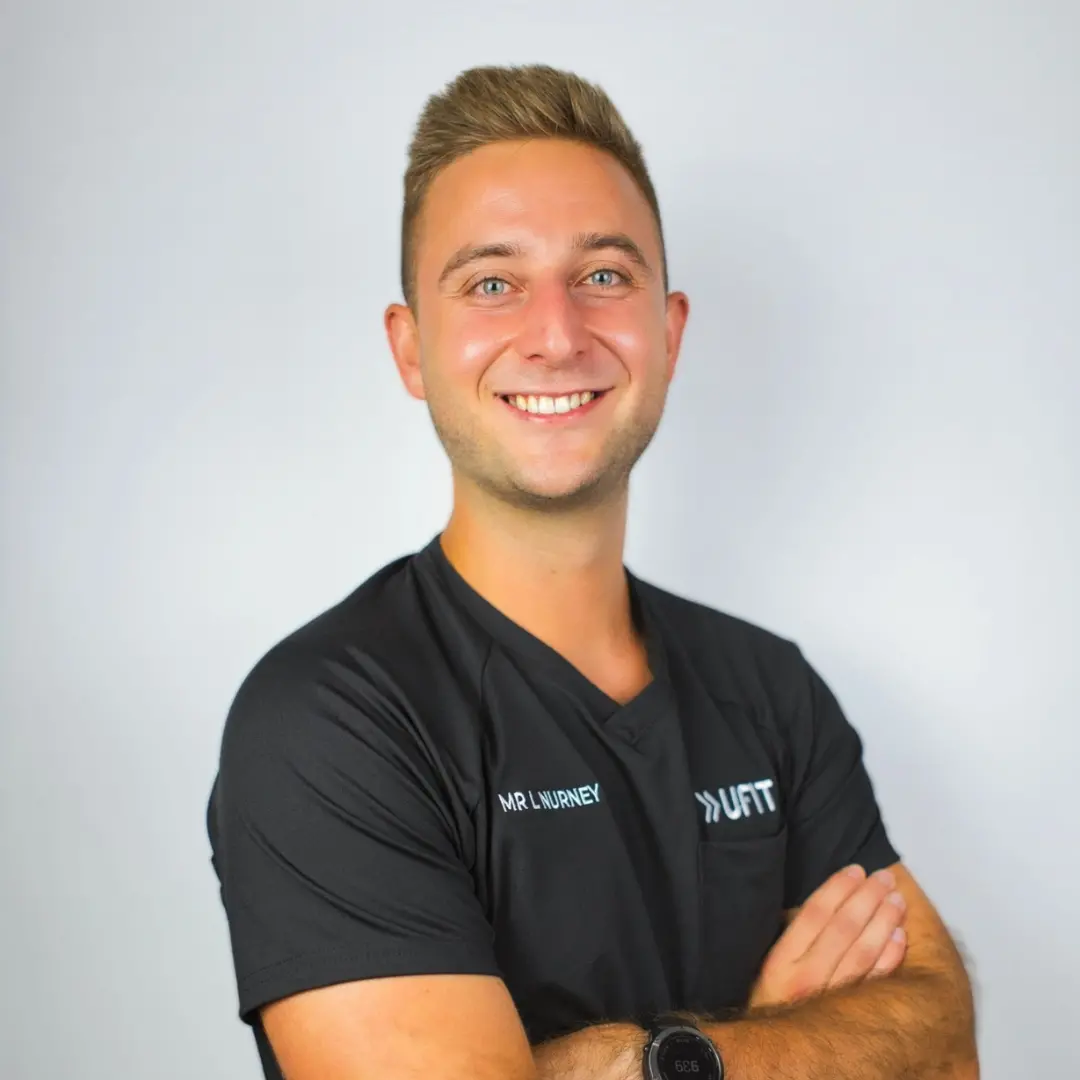
Lewis Nurney
Lewis is a highly experienced podiatrist with over 5 years of practice in Singapore, bringing his expertise to UFIT's comprehensive Circle of Care. As Head of Podiatry at UFIT Club Street, he specialises in sports podiatry, innovative orthotics for adults and children (including 3D-printed custom insoles, Paediatric AFOs and SMOs for pediatric flat feet), and minimally invasive procedures.
A first-class honours graduate from the University of Huddersfield (UK), Lewis holds dual certifications in Extracorporeal Shockwave Therapy (ESWT), Diagnostic Ultrasound and Running Gait analysis. Previously with East Coast Podiatry, he now provides patient-centred care at UFIT, specialising in non-surgical management of conditions like Foot Pain, Plantar Fasciitis and Achilles Tendinopathy in both children and adults, ultimately focused on alleviating discomfort and restoring optimal foot function.
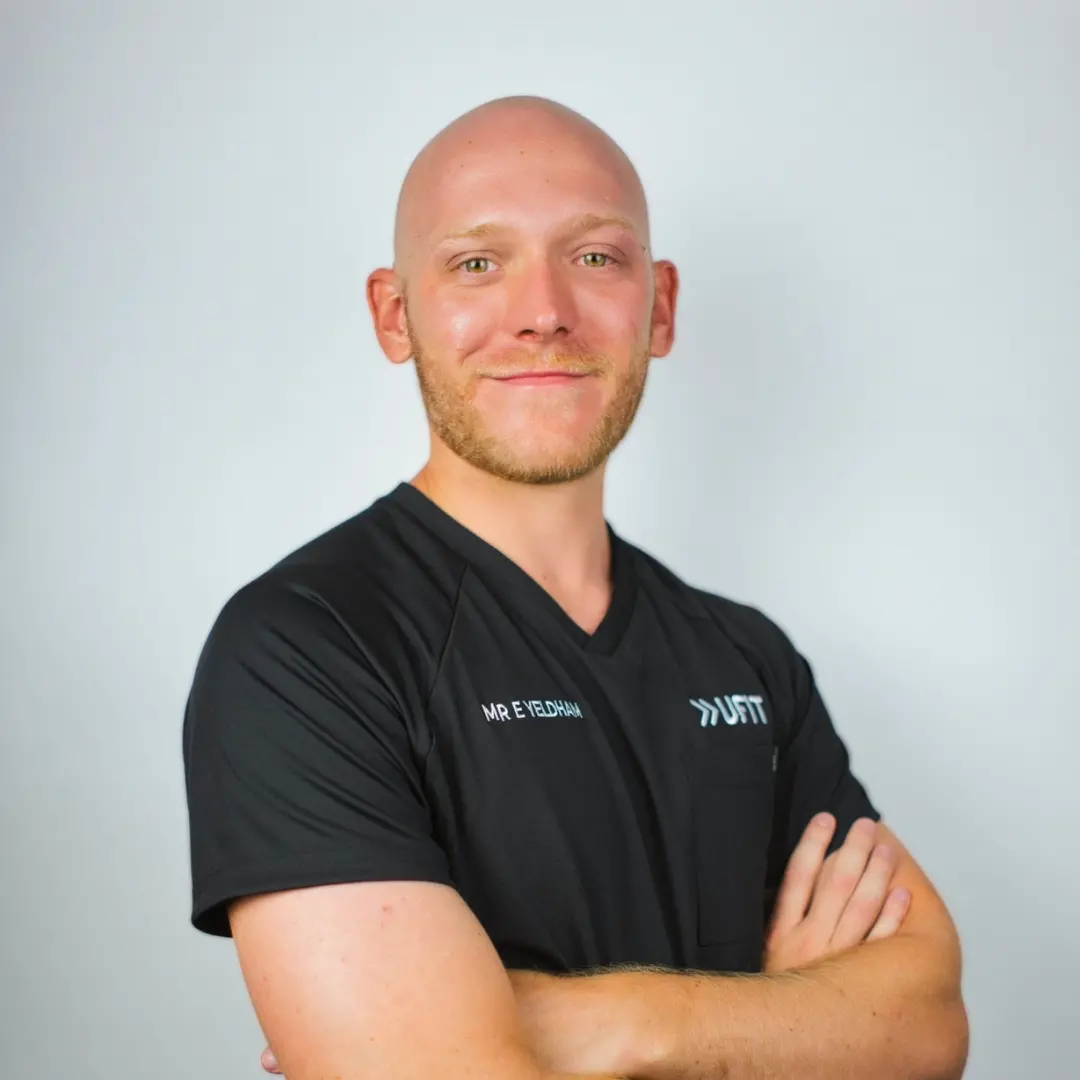
Elliot Yeldham
Elliott is a dedicated podiatrist with over 7 years of healthcare experience, gained in both the UK's National Health Service (NHS) and private practice. He holds an Honours degree in Podiatry from Cardiff Metropolitan University (Wales), and brings a wealth of expertise to Singapore.
Specialising in Musculoskeletal (MSK) podiatry, Elliott's interests include sport podiatry and the management of gait abnormalities in both adults and children. He is also recognised for his skill and patient-focused approach in minimally invasive procedures for ingrown toenails and wart removal. Committed to a patient-centred and multidisciplinary model, Elliott actively stays informed of the latest healthcare advancements through clinical research and international conferences.
Why Choose UFIT Podiatry?
At UFIT, we are dedicated to providing our patients with the highest level of care. We go beyond a regular podiatry clinic, using advanced biomechanical and movement assessments to create personliased treatment plans that will help take you from injury, to optimising health, all the way to performance.
Our commitment extends beyond addressing injuries or pain – our comprehensive range of services are tailored for injury prevention, prehabilitation, rehabilitation, and performance optimization in sports and everyday life. So whether you are an athlete, active individual, or a parent seeking specialized lower limb health for your child, our commitment to personalized, evidence-based care and innovative technologies ensures transformative outcomes.
![]()
Buy now, pay later with Atome
Book Your Shockwave Therapy Session Now
Visit Our Podiatry Clinic
21 Club St, #01-01
Singapore 069410
+65 6225 5059
podiatry@ufit.com.sg
View on Google Maps
Trusted by Global & Local Podiatry Associations



Frequently Asked Questions about Shockwave Therapy
Yes, shockwave therapy is often considered for chronic musculoskeletal conditions, particularly those that haven't responded sufficiently to other forms of treatment. It targets affected tissues to help stimulate repair and reduce long-standing pain. Your podiatry specialist can assess if it's a suitable option for your specific chronic pain issue.
UFIT does not offer direct billing for shockwave therapy. Services are self-pay at the time of treatment.
However, we are recognised by major insurance providers, and we will provide you with all the necessary documentation (detailed invoices) to submit a claim for reimbursement, according to the terms of your policy. We recommend checking with your insurer beforehand regarding coverage.
Podiatry Blog
Check out the podiatry articles on our blog, written by our very own experts!

.png?width=301&height=187&name=Website%20Navigation%20Images%20(3).png)

-1.jpg?width=1984&height=1196&name=UFIT%20Club%20Street%20Front%20(4)-1.jpg)


